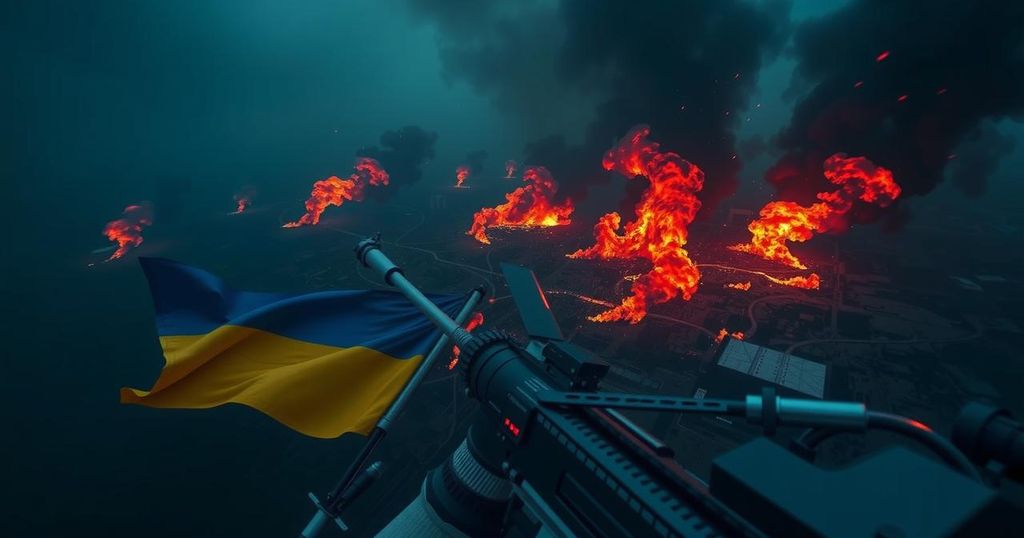Central Asian Media’s Discreet Silence on Russia’s War in Ukraine
Central Asian state media have largely refrained from addressing Russia’s war in Ukraine, with Turkmenistan’s media being particularly silent. Independent outlets provide a stark contrast by covering the conflict actively, despite facing significant pressure from Russian authorities. Countries like Kazakhstan have made cautious public statements, while others outright ignore the war, demonstrating a widespread pattern of censorship reminiscent of Soviet practices. Consequently, the media landscape reflects fears of retribution and the need to align with Russian sentiments amid the ongoing geopolitical crisis.
Central Asian state media have displayed a notable silence regarding Russia’s ongoing war in Ukraine, strikingly reminiscent of the Soviet-era suppression of unfavorable information. While Turkmenistan’s state media stands out for its complete avoidance of the subject, various other government-controlled outlets within the region have similarly minimized coverage despite the war’s direct implications for their citizens, such as the return of deceased soldiers. In marked contrast, independent media operate with higher levels of transparency, often exposing the war’s developments despite the potential backlash from Russian authorities. Kazakhstan, which shares an extensive border with Russia, has occasionally issued bolder statements—such as pledging not to recognize territories claimed by Russia during the conflict. Yet, its state-controlled media seldom reference the war, diverting viewers’ attention to unrelated international incidents. While Kazakhstan’s efforts to provide humanitarian assistance to Ukraine, exemplified by local businessmen sending yurts for displaced civilians, briefly attracted attention, this was quickly followed by diminished reporting on the war, largely to avoid offending Russia. This mindful avoidance is replicated in Uzbekistan and Tajikistan, where the war receives virtually no media coverage. The Kyrgyz media landscape exhibits a slight variation, where state broadcaster KTRK occasionally highlights the situation, albeit in a limited and neutral manner. Private media outlets, conversely, illustrate a more diverse approach, ranging from geopolitical analysis to ground-level reporting from the frontlines. However, their coverage has not been without consequence; outlets like Kyrgyz news agency 24.kg have faced official scrutiny, with accusations of “war propaganda” leading to increased regulatory pressures and even raids. Despite the crackdown, some private media in Uzbekistan remain relatively unscathed, managing to report independently from the Russian perspective. The overarching sentiment among Central Asian media reflects a palpable trepidation toward Russian sensitivities surrounding the war, indicating a broader pattern of censorship reminiscent of Soviet-era practices, particularly within highly authoritarian regimes like Turkmenistan. Here, any mention of international conflict is almost nonexistent, ensuring that the state media remains unchallenged and completely aligned with government narratives.
The article examines the distinct approaches towards coverage of the Ukraine conflict by media in Central Asia. It highlights the comparative repression among state-run media, particularly in authoritarian contexts such as Turkmenistan, against the more progressive but perilous environment for independent journalism. The implications of these practices for public awareness and sentiment in the region are significant, given the direct social and economic impacts of the ongoing war on Central Asian nations, particularly with regard to their relations with Russia and the effects of military mobilization and sanctions.
In conclusion, the media landscape in Central Asia demonstrates a conscious effort by state-controlled outlets to obscure the realities of the Russia-Ukraine war, echoing the censorship practices of the Soviet Union. While independent media strive for greater transparency and coverage of the crisis, they face considerable risks from authoritarian regimes intent on maintaining strict narratives. The overall silence from state media serves to both shield governmental actions from scrutiny and mitigate potential backlash from Russia, illustrating the complexities of regional geopolitics and media freedom in the post-Soviet space.
Original Source: www.rferl.org




Post Comment